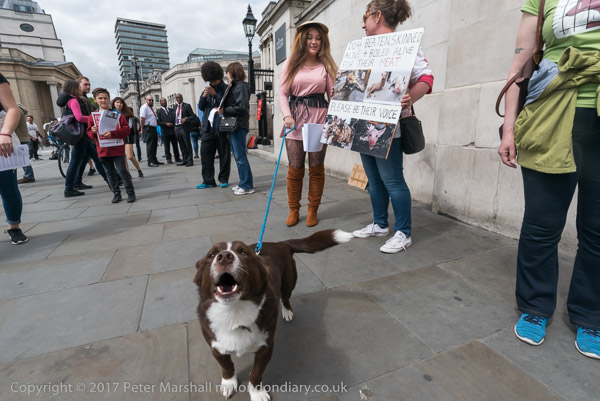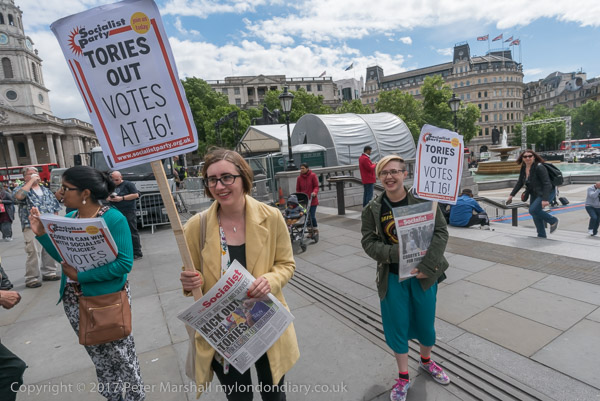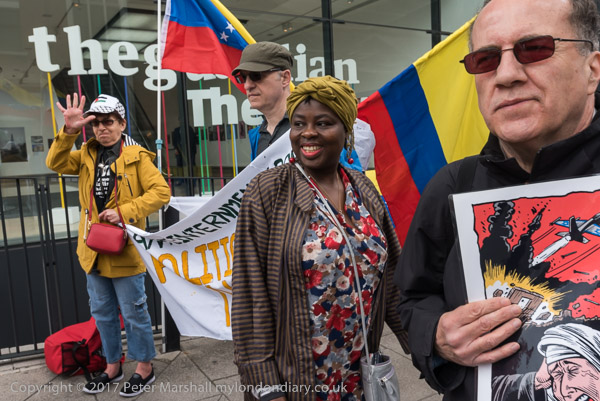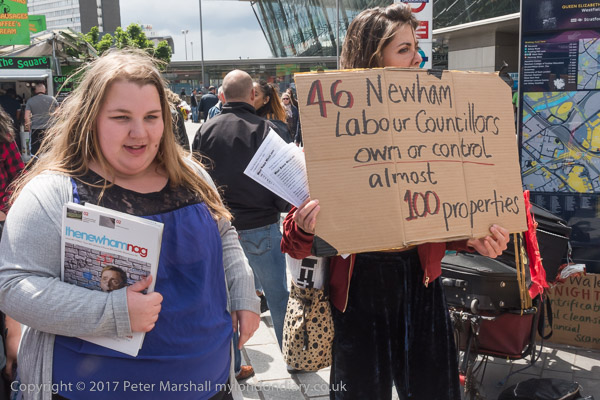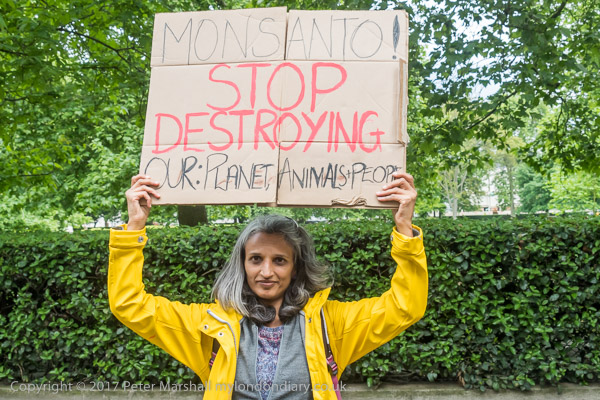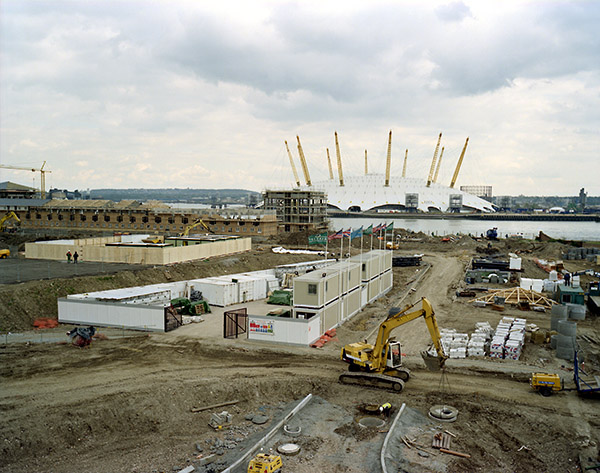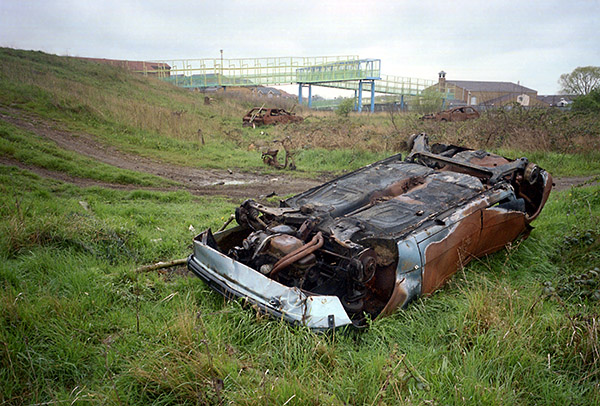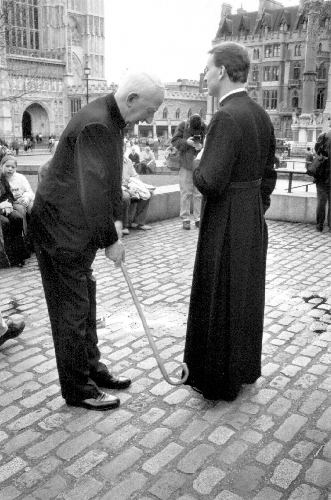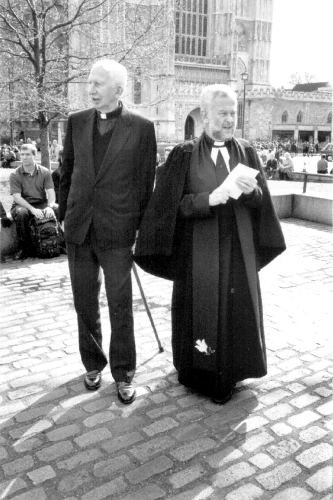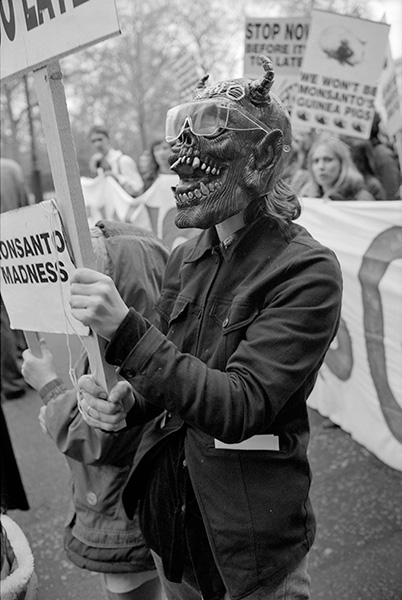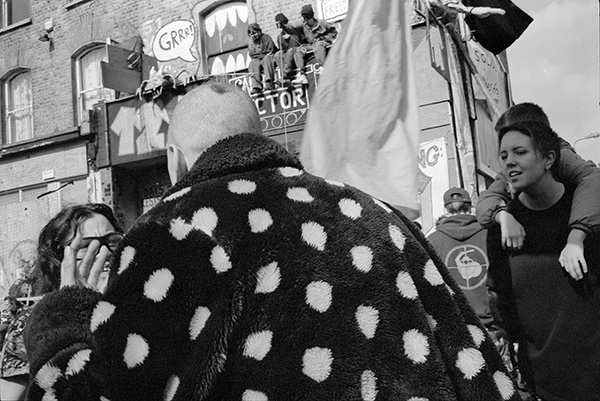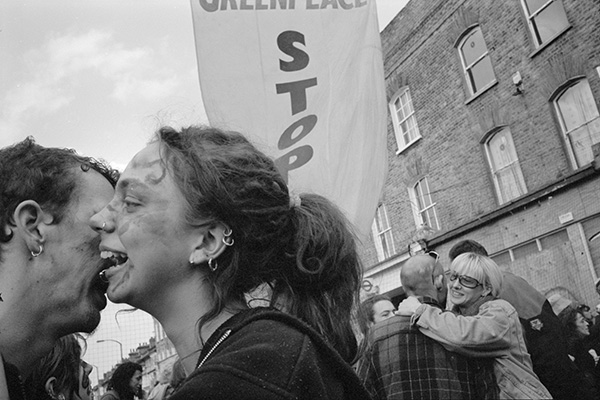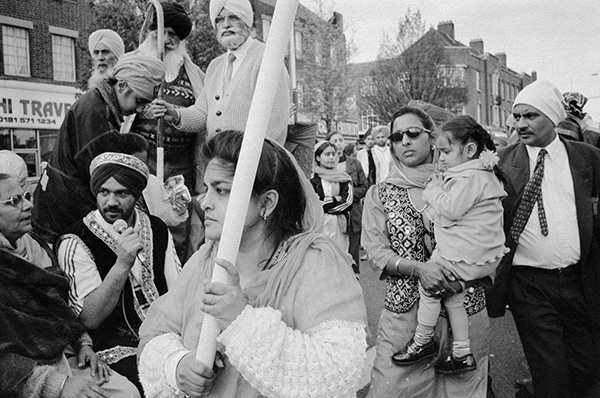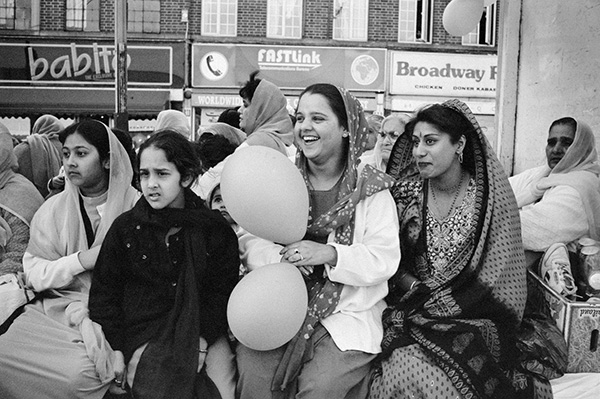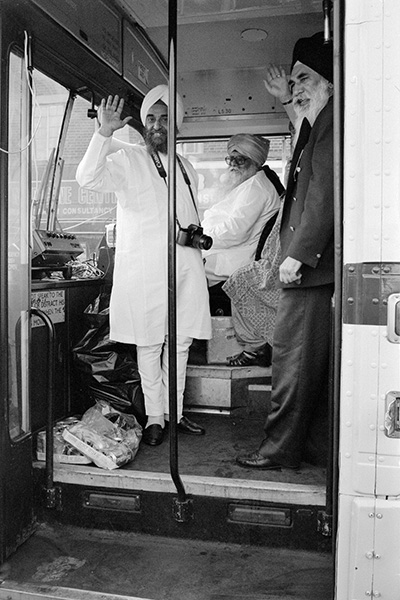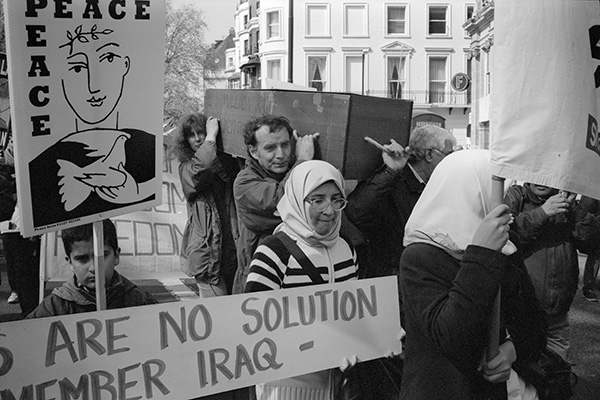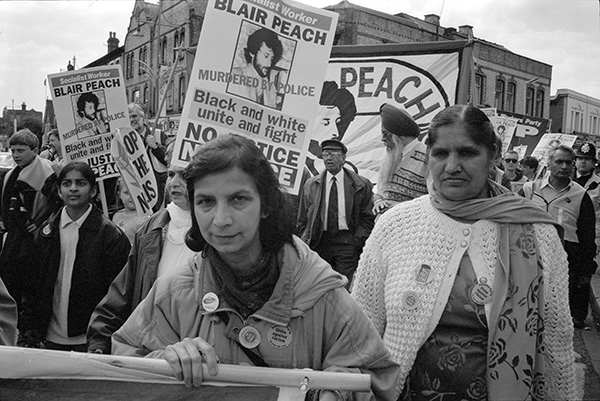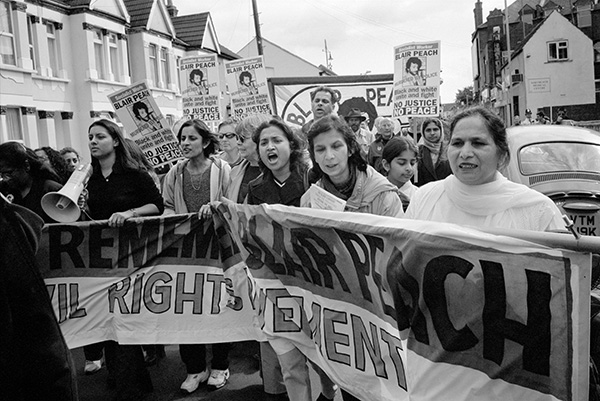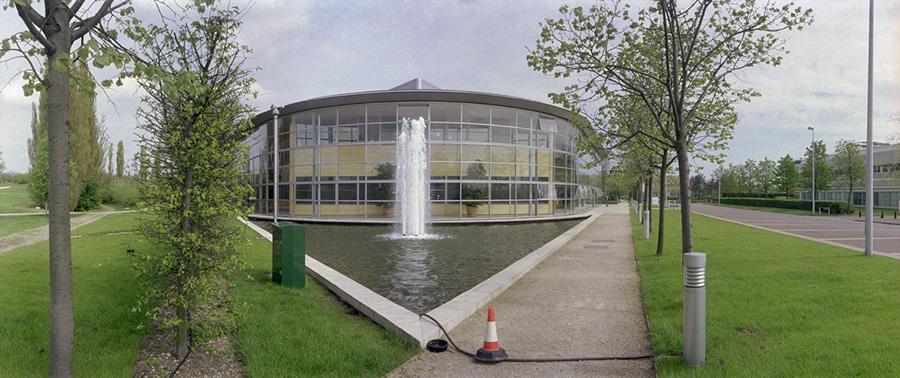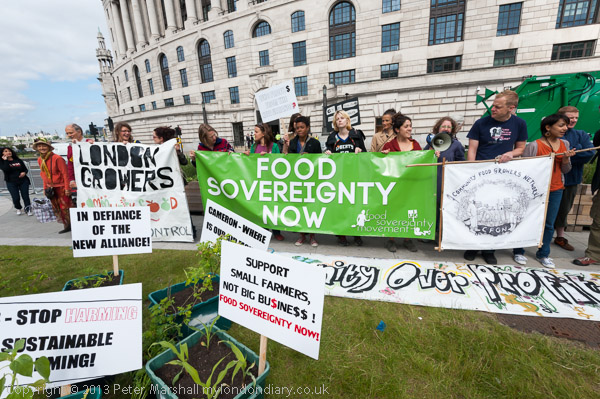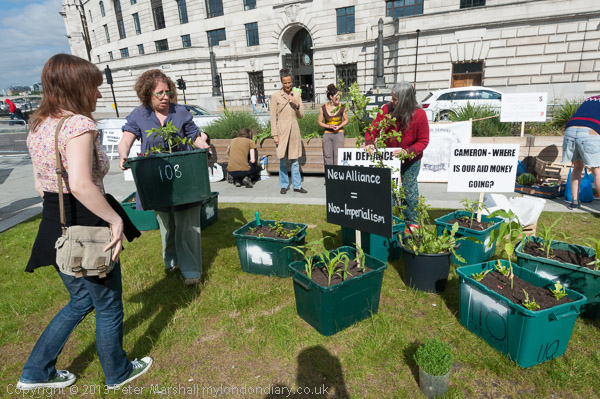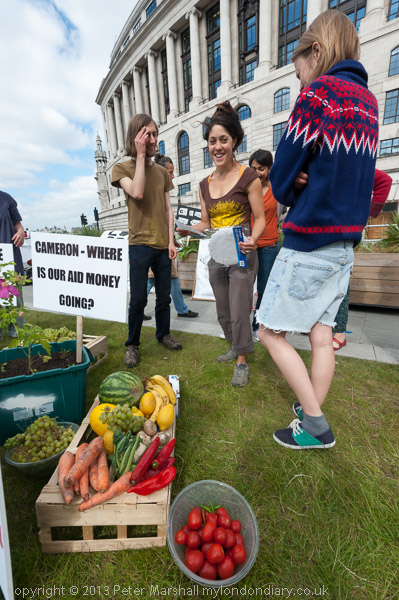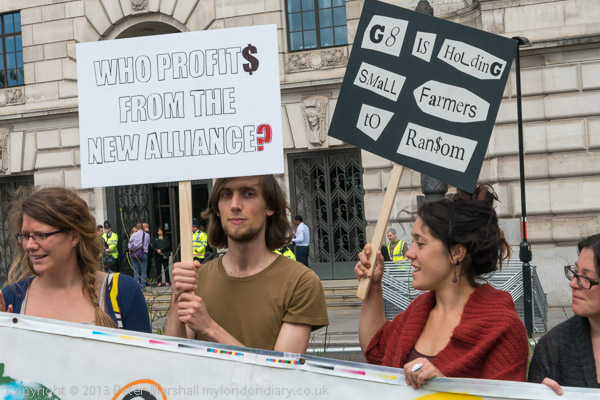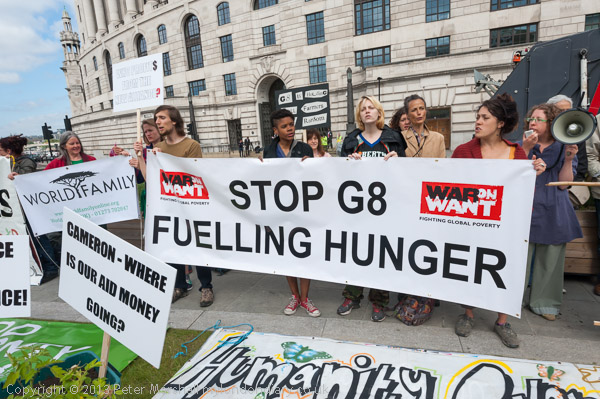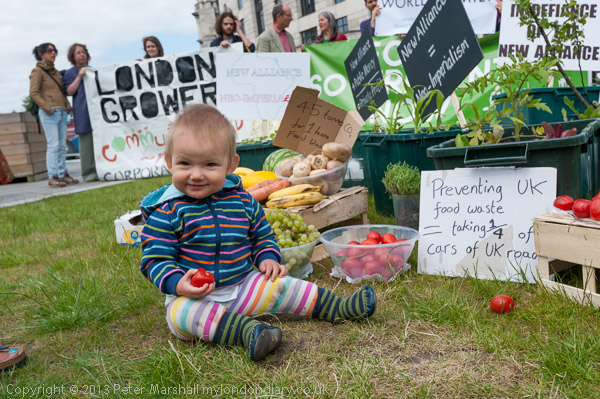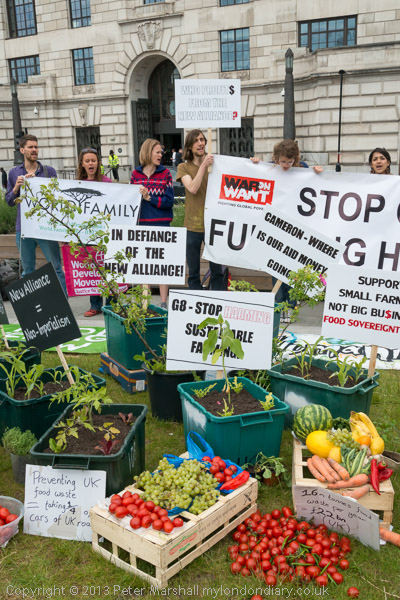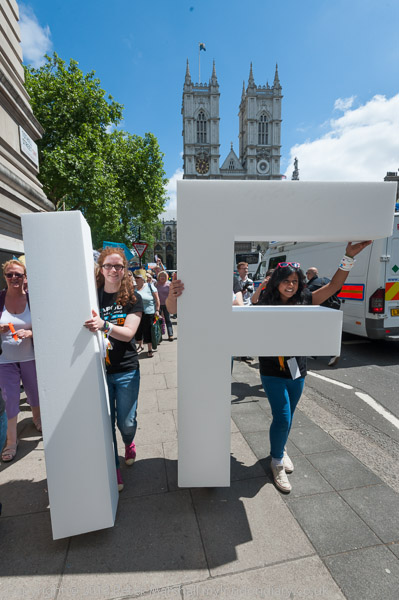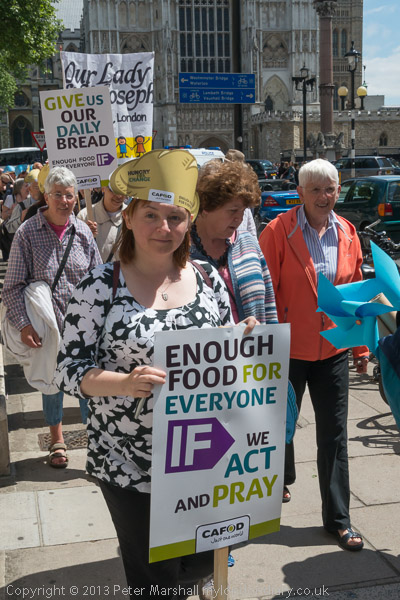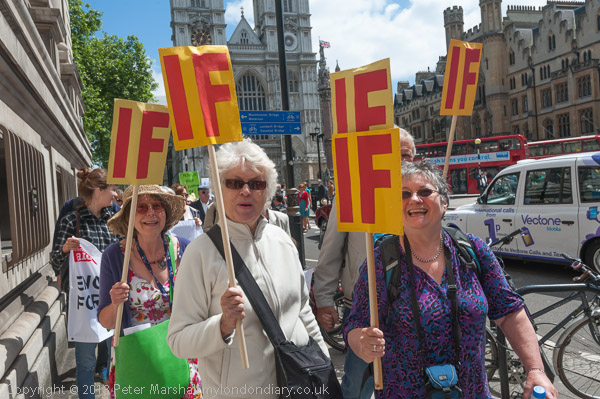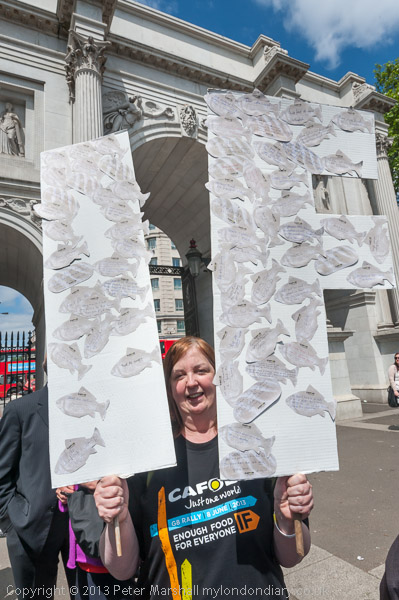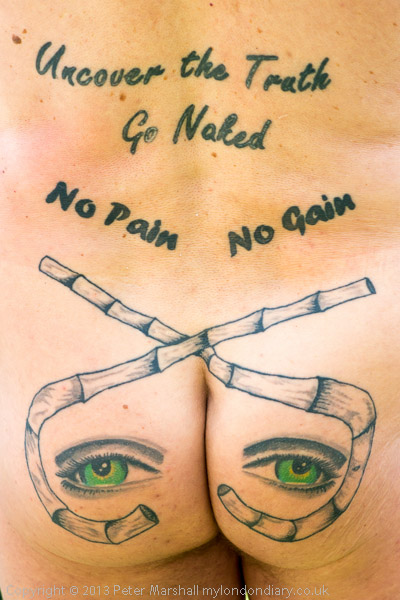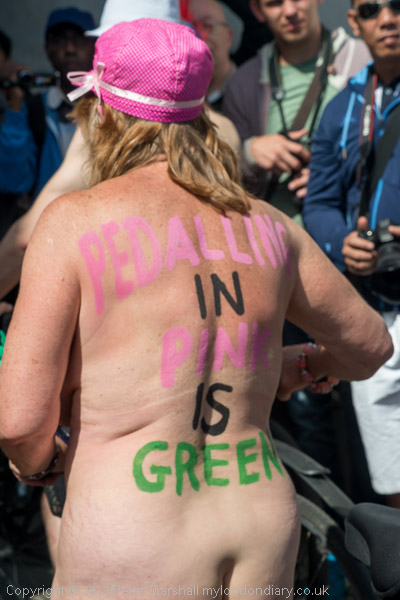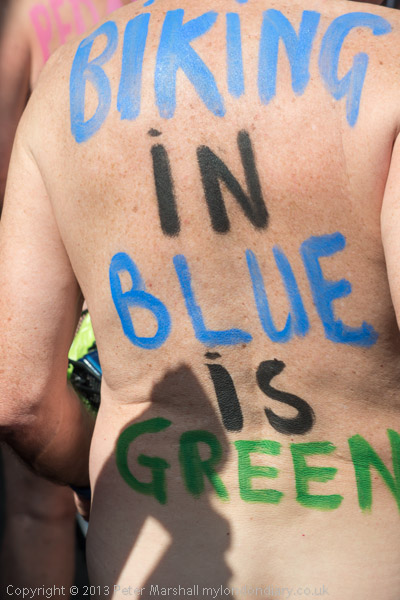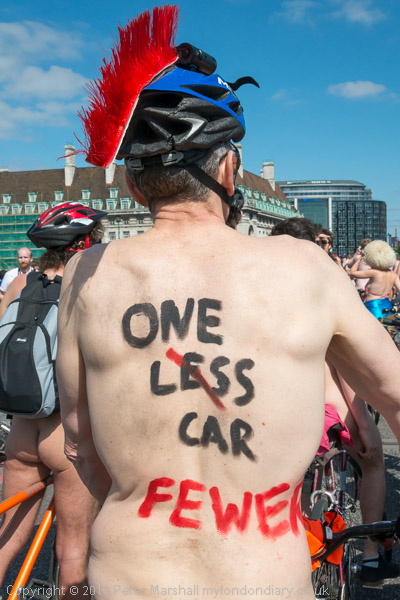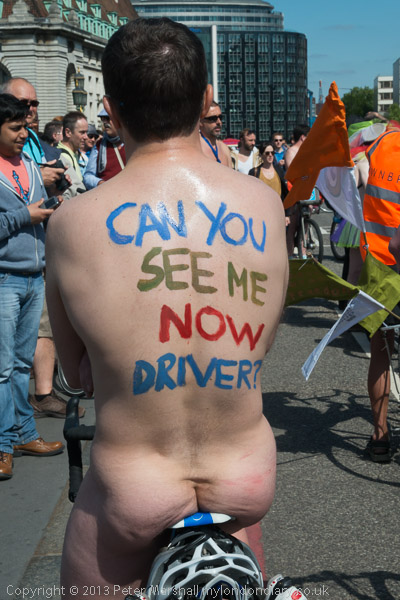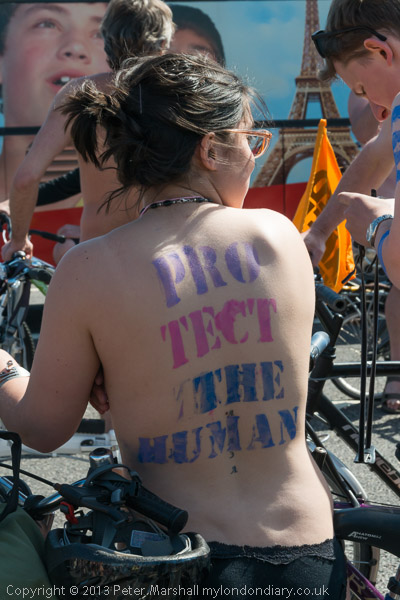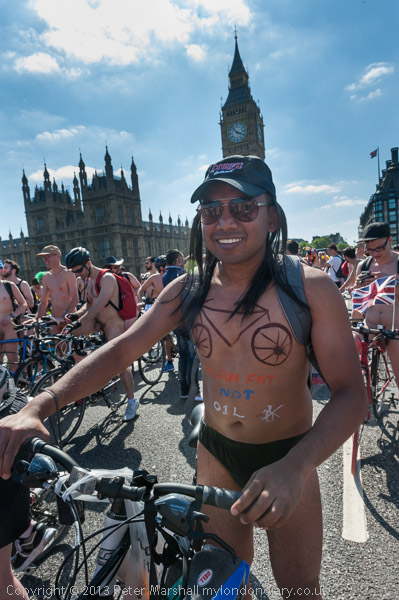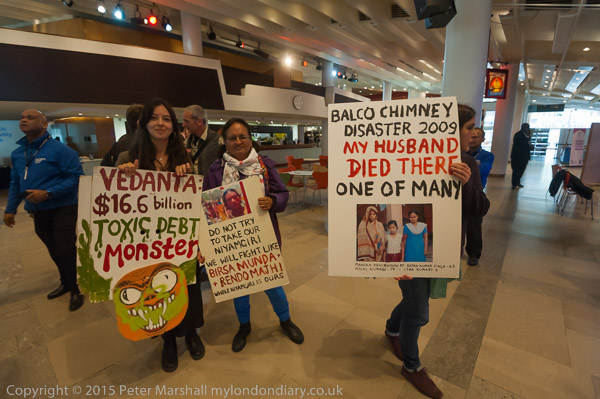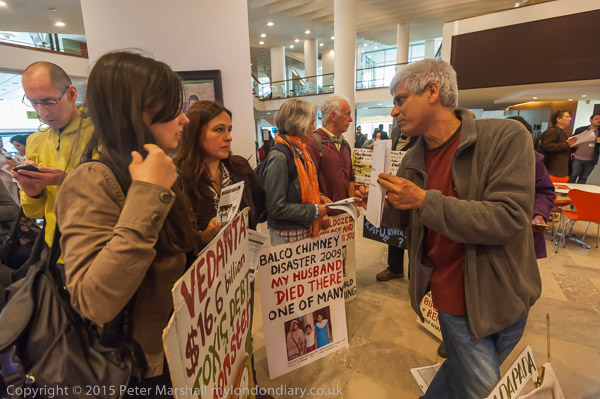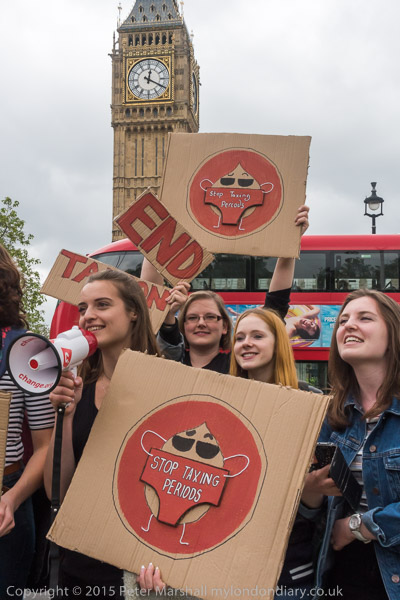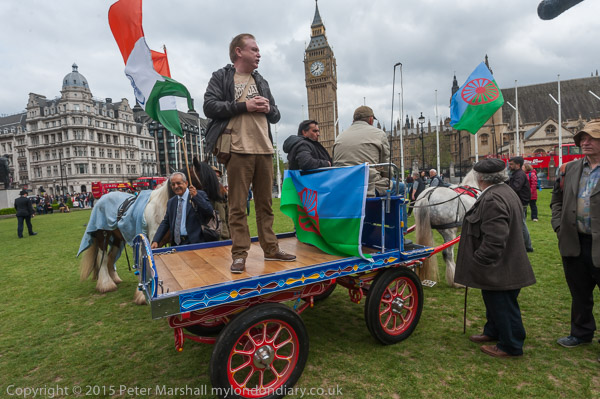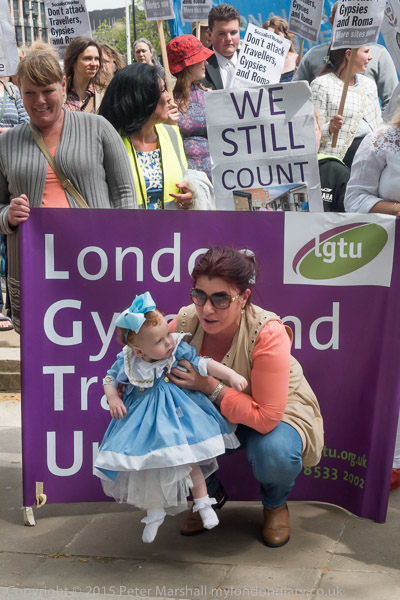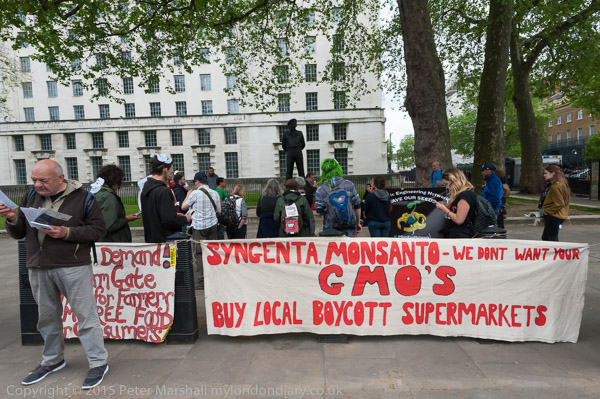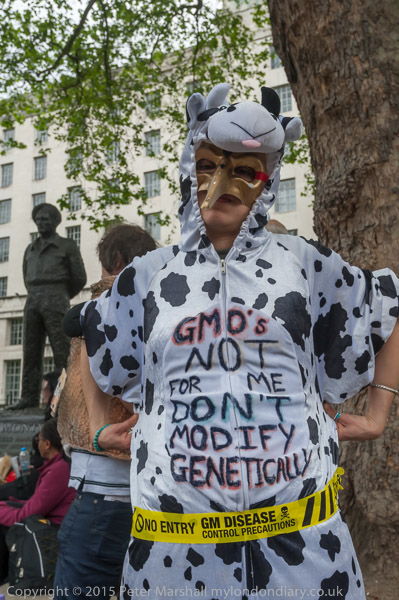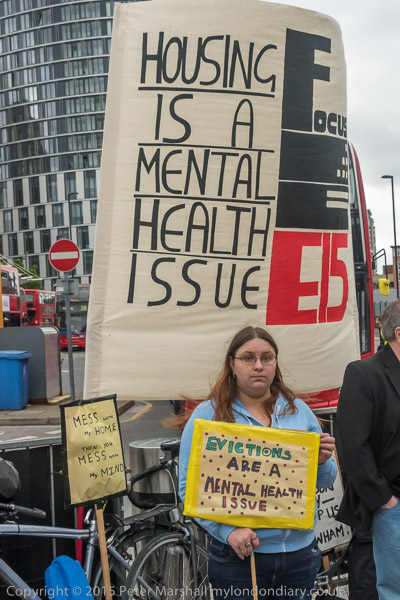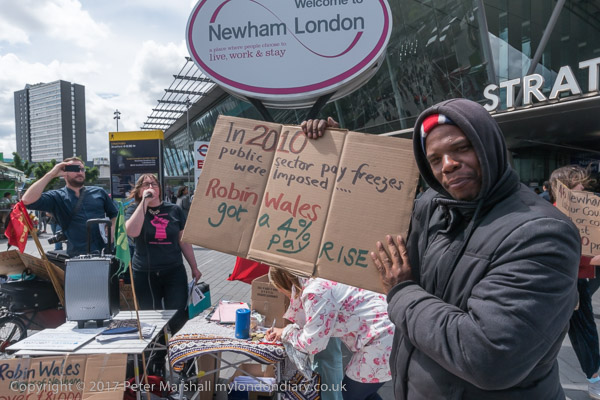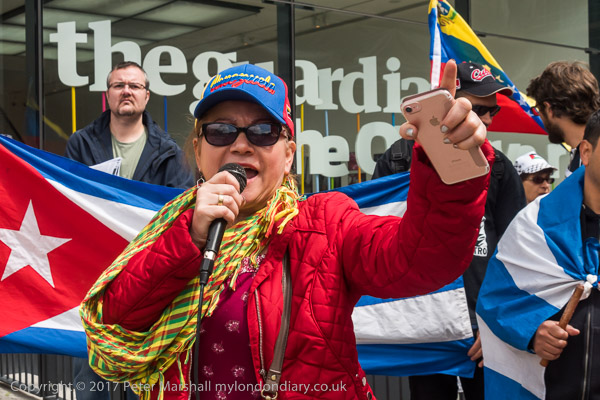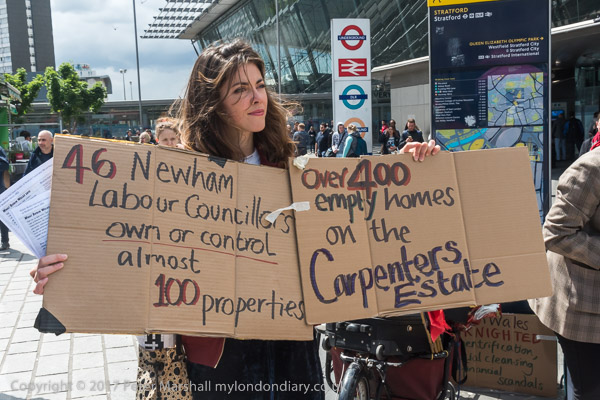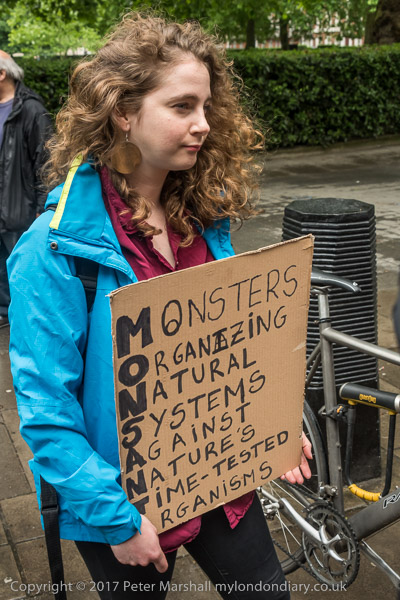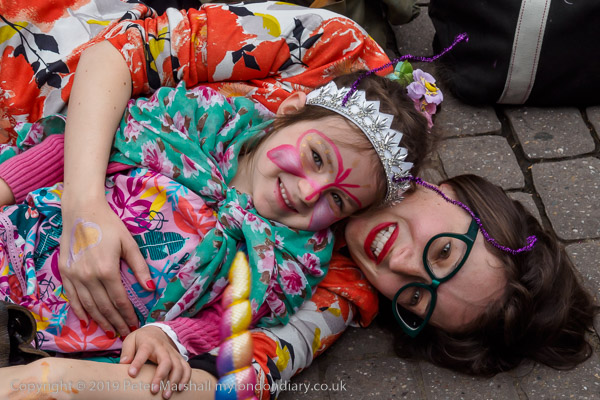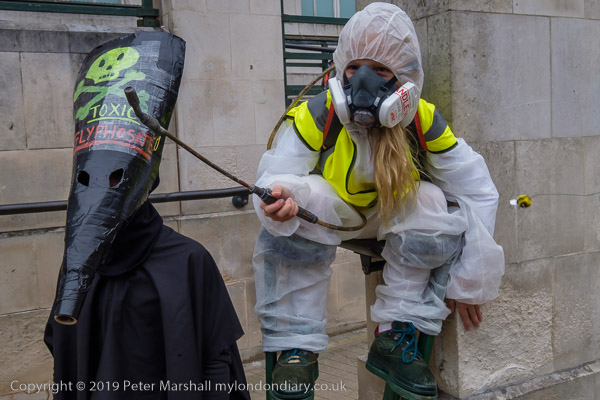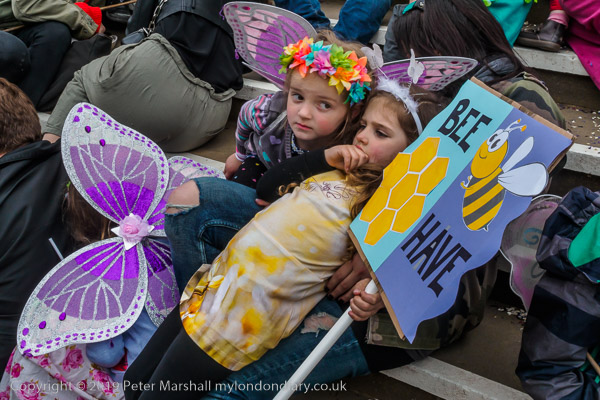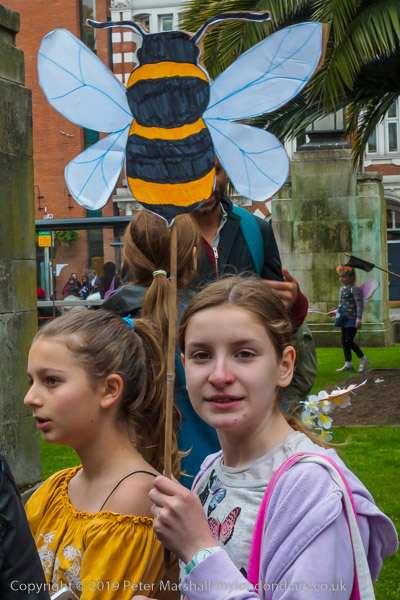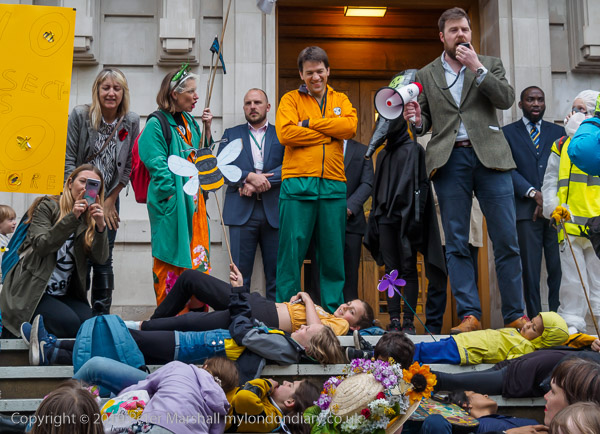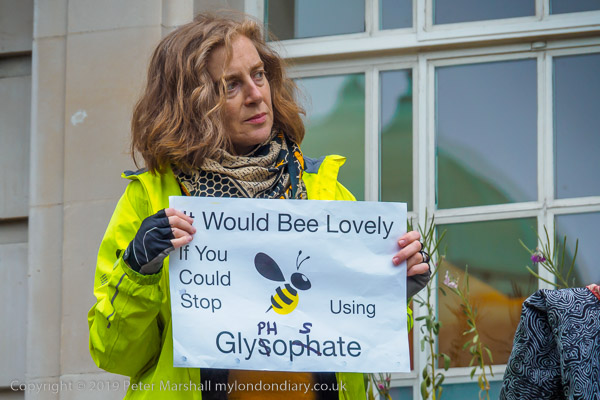Vedanta, Tampon Tax, Roma, Monsanto & Mental Health: Saturday 21 May 2016 was another busy day for me covering protests across London. It started with a protest against mining company Vedanta at the Royal Festival Hall, then across the river to Parliament Square where protesters were calling on the government to meet their pledge to axe the tax on tampons and later Roma, Gypsies and Travellers arrived with horses and carts to protest against increasing attacks on their way of life.
A short distance up Whitehall was a small protest against Monsanto, part of a world-wide ‘March Against Monsanto’. My work ended out to the east in Stratford where Focus E15 housing campaigners held a march and rally against the mental health problems that Newham Council’s housing policy is creating.
Foil Vedanta at Jaipur Literary Festival – Royal Festival Hall

Foil Vedanta were inside the Royal Festival Hall to protest against the sponsorship of the Jaipur Literature Festival taking place there by Vedanta “the most hated company on Earth, causing pollution, illness, displacement, poverty and deaths by its mining operations, sometimes criminal, in India, Zambia, South Africa and Australia” in an attempt to whitewash its image.

An open letter by Foil Vedanta and Round Table India signed by around 50 mainly Indian writers, poets, academics and activists had persuaded several authors to withdraw from the event and some others had promised to criticise Vedanta in their presentations.

The protesters took to the stage for a brief presentation of the case against Vedanta and then withdrew to continue protesting inside the venue but outside the area containing the festival stage. They intended to continue their protests for a couple of hours but I had taken enough pictures and left to walk across the river.
Foil Vedanta at Jaipur Literary Festival
End Tampon tax Now Osbourne! – Parliament Square
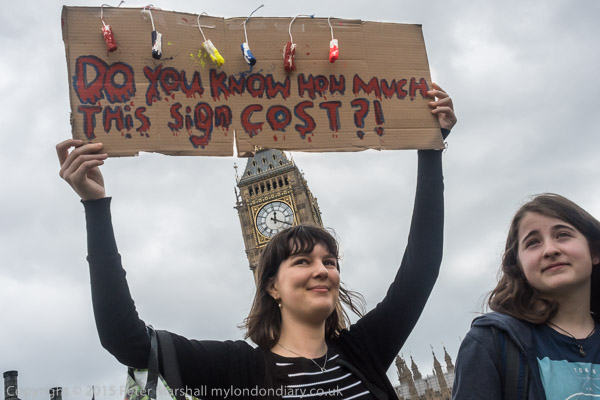
A massive campaign and lobby had resulted in the removal of regulations preventing the removal of tax, but the government had so far failed to implement the removal. Protesters held a short rally and then marched to Downing Street to deliver their message to Chancellor of the Exchequer George Osborne.
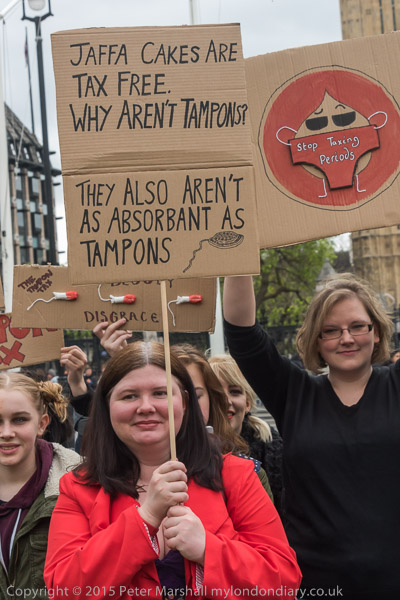
Among the protesters were ’50:50 Parliament’ who call for equal representation of women and men in Parliament. They say that if there were more women in Parliament there would not be taxes such as this – and rather less of the public-school bickering that often dominates the House of Commons.
More at Tampon tax now Osbourne!
‘Dosta, Grinta, Enough!’ – Parliament Square
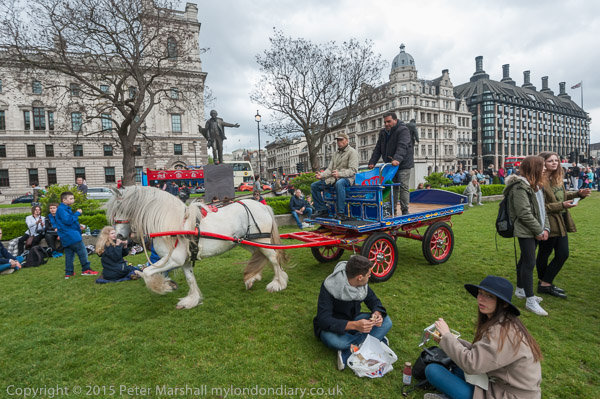
Roma, Gypsies and Travellers came to Parliament Square on four horse-drawn vehicles to protest against the increasing attacks by governments which make their way of life difficult.

Changes have let local authorities stop providing traveller sites and made it harder to find places to stop as they move around the country. And where travellers have bought sites local authorities have used planning laws in a discriminatory way to prevent them using it – as at Dale Farm near Basildon.

They say changes to the planning guidance are an attack on their ethnicity and way of life and they call for an end to 500 years of persecution.

Police and heritage wardens forced them to move off the grass in Parliament Square and they made a few circuits on the road before leaving as a rally began.

I left too, to cover another protest at Downing Street.
More on My London Diary at ‘Dosta, Grinta, Enough!’
March Against Monsanto Rally – Downing St
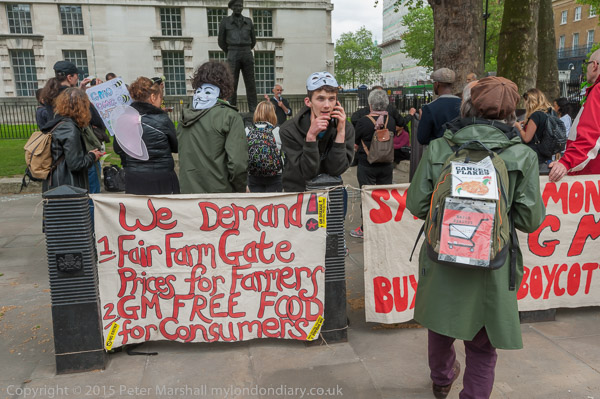
I’d looked earlier for the ‘March Against Monsanto’ but the march in London – part of a world-wide series of annual protests – was small and I had failed to find them until they arrived for a rally oppposite Downing Street.
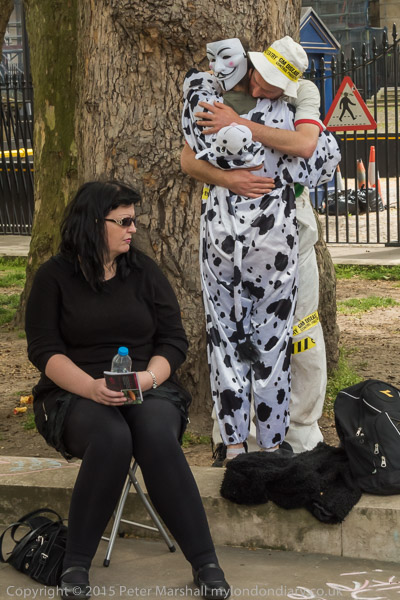
Monsanto’s widely used herbicide Roundup was said by the WHO to be “probably carcinogenic to humans” and its neonicotinoid insecticides contribute to the killing of bees and other pollinators. Campaigners also oppose the genetically modified crops which they say are dangerous to human health.
Housing is a Mental Health Issue – Stratford
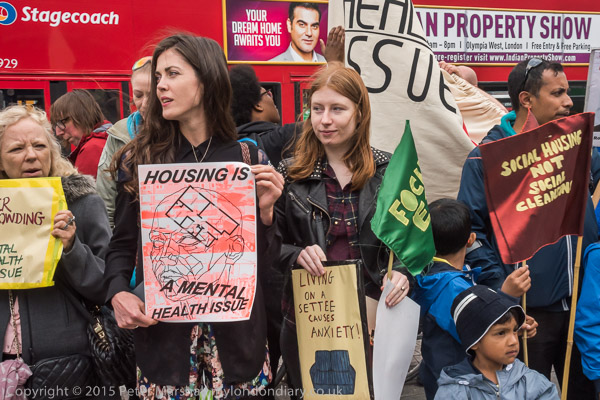
As a part of Mental Health Awareness Week, housing campaigners Focus E15 held a rally outside Stratford Station against Newham Council which they say is causing mental health problems for vulnerable people through evictions and placements with insecure tenancies and away from families, friends and support systems in cities and towns across the UK.
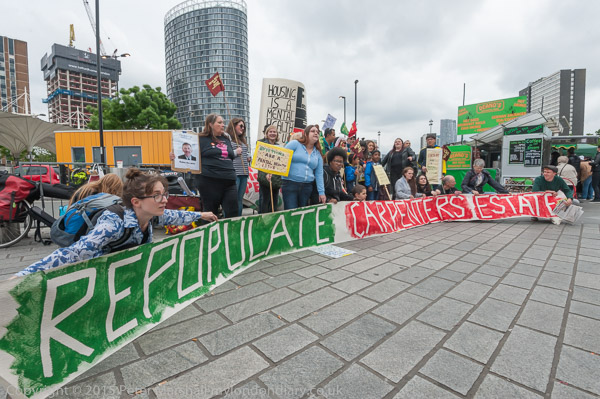
After the rally with speeches, songs and poems, the group marched around central Stratford where new high-rise building to house wealthy newcomers to the area or simply bought as investments and often kept empty is rapidly springing up “while those unable to afford sky high market rents are being forced out.”

These tall blocks also create inhospitable micro-climates at ground level which make areas such as these unpleasant for people at street level – and a sudden gust in front of one block tore one of the banners in two.
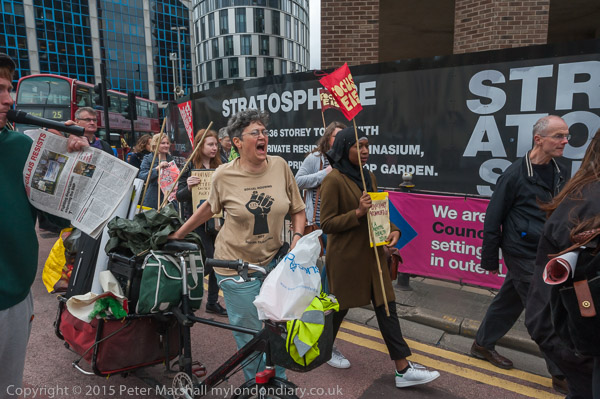
The short march ended on Stratford Broadway where despite harassment by police and council staff Focus E15 continue to hold a regular Saturday morning street stall.
More at Housing is a Mental Health Issue.
Flickr – Facebook – My London Diary – Hull Photos – Lea Valley – Paris
London’s Industrial Heritage – London Photos
All photographs on this page are copyright © Peter Marshall.
Contact me to buy prints or licence to reproduce.
